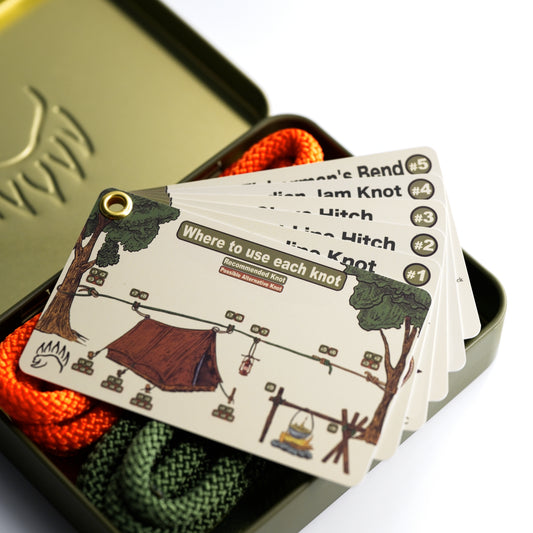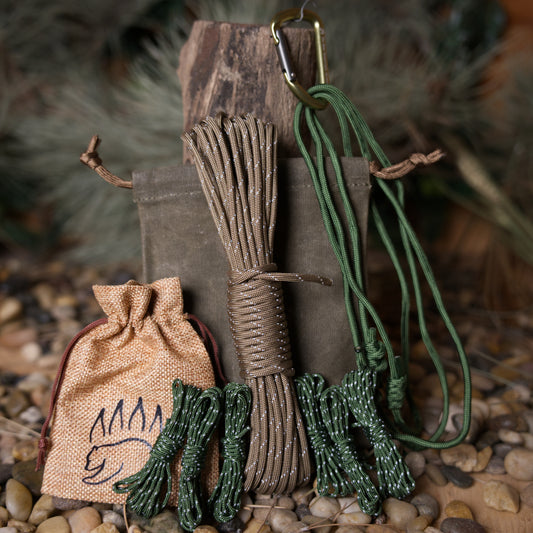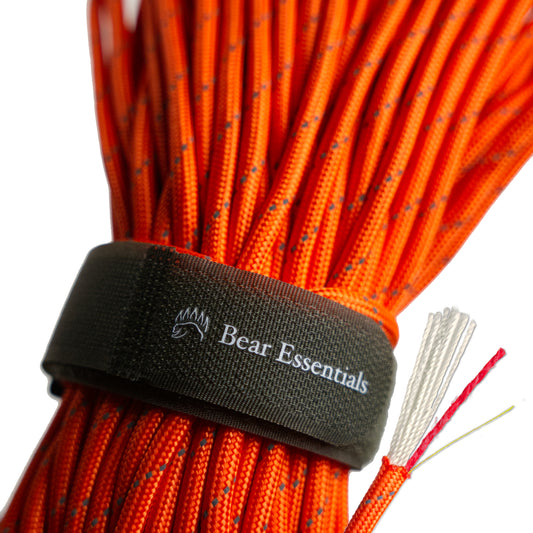How to Tie the Slipped Figure-Eight Knot
Usage
The Slipped Figure-Eight Knot is commonly used to create a temporary anchor point, particularly in climbing and arborist work for its quick-release feature. Compared to the standard Figure Eight Loop, which is harder to untie after loading, this knot releases with a single tug, making it ideal for non-critical setups. Its robust structure ensures strength, but it’s not suited for life-support applications. This knot is valued for its speed and ease in outdoor tasks.
Why Learn the Slipped Figure-Eight Knot?
Its quick-release design simplifies anchor setups. This knot is a practical choice for climbers and arborists needing fast, secure temporary ties.
Common Uses
-
Climbing:
- Creates temporary anchor points for gear or setups.
- Secures ropes for quick-release in non-critical tasks.
-
Arborist:
- Ties temporary anchors for pulling or rigging.
- Secures lines for easy release during tree work.
-
Utility:
- Anchors ropes for temporary bundling or pulling.
- Manages cords in workshops or outdoor settings.
ABOK Number
(Ashley Book of Knots)
Other Names
Category
|
Notable Features
- Instant release: Unties with a single pull, saving time in breakdowns.
- Strong anchor: Maintains security for temporary, non-critical loads.
- Easy to tie: Simple variation of the figure-eight, quick to learn.
- Versatile use: Suits climbing, arborist, and utility applications.
- Recognizable: Figure-eight base is easy to inspect for safety.
Variations
No true variations are listed in the provided knot index. For added security, tie a stopper knot on the working end to prevent accidental release.
Similar Knots
Figure Eight on a Bight vs. Slipped Figure-Eight Knot
- Pros: Stronger and more secure for critical anchor points.
- Cons: Harder to untie after heavy loading compared to the slipped version.
Highwayman’s Hitch vs. Slipped Figure-Eight Knot
- Pros: Releases instantly and suits temporary ties to objects.
- Cons: Less secure under jostling, unlike the figure-eight’s stable structure.
History
The Slipped Figure-Eight Knot likely evolved from the traditional figure-eight knot, widely used in climbing for its strength and reliability. Its quick-release adaptation, though not explicitly listed in The Ashley Book of Knots, reflects modern needs in climbing and arborist work for fast, temporary anchors. The knot’s design balances security with ease of untying, making it popular in dynamic outdoor contexts.
Security Level
The Slipped Figure-Eight Knot is reliable for temporary, non-critical anchor points, holding well under moderate loads when tied correctly. It’s not suitable for life-support or heavy loads due to its quick-release nature, which can slip if not monitored. A stopper knot on the working end can enhance stability for slippery ropes.
Downsides
- Not for critical loads: Unsuitable for life-support or heavy applications due to slipping risk.
- Requires monitoring: May loosen without constant tension or if jostled.
Structure
- Form a bight in the rope near the working end.
- Create a figure-eight knot by looping the bight around the standing part and passing it through the loop.
- Instead of passing the working end through the final loop, pass a bight of the working end through.
- Pull the standing part to tighten the knot, ensuring the slipped bight is accessible.
- To release, tug the slipped bight to unravel the knot instantly.
Pro Tip: Ensure the slipped bight is long enough for easy pulling. Use a smooth rope to facilitate quick release. Check the knot’s figure-eight shape before loading to confirm security.
FAQ
Is the Slipped Figure-Eight Knot strong enough for heavy loads?
It’s reliable for temporary, moderate loads but not for heavy or critical applications.
What ropes work best for the Slipped Figure-Eight Knot?
Smooth, flexible ropes like nylon or climbing ropes ensure easy tying and release.
How does the Slipped Figure-Eight Knot compare to the Figure Eight on a Bight?
It’s faster to untie but less secure for critical anchoring tasks.
Can the Slipped Figure-Eight Knot be used for climbing anchors?
Only for temporary, non-critical setups, not for primary or life-support anchors.
Why choose the Slipped Figure-Eight Knot over the Highwayman’s Hitch?
It’s more stable under moderate loads and easier to inspect for safety.
Important Notes on Safety
Common failure points include using the knot for critical loads or failing to secure the slipped bight, leading to accidental release. Always verify it’s used for temporary, non-critical tasks.
Inspect ropes for wear before tying to avoid breakage.
Ensure the figure-eight pattern is correct before loading.
Practice tying and releasing in low-risk settings first.









